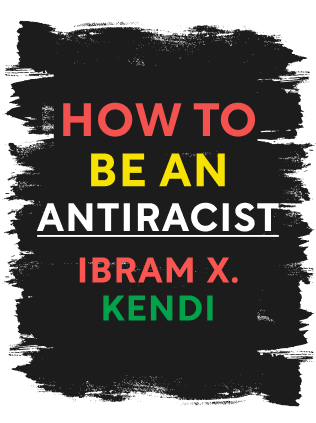

This article is an excerpt from the Shortform book guide to "How to Be an Antiracist" by tIbram X. Kendi. Shortform has the world's best summaries and analyses of books you should be reading.
Like this article? Sign up for a free trial here .
Are you looking for How to Be an Antiracist discussion questions? How can How to Be an Antiracist discussion questions help you better understand and apply the book?
How to Be an Antiracist discussion questions focus on understanding key concepts and applying them to your own life. By working through these questions on your own or with a book club, you will be better equipped to be antiracist.
Keep reading for 17 How to Be an Antiracist discussion questions.
Overview of How to Be an Antiracist Discussion Questions
In How to Be an Antiracist, author Ibram X. Kendi takes readers through his journey to become an antiracist—a person who believes that all racial groups are equal and supports policies that reduce inequity. Antiracists acknowledge that there are differences between races, but these differences aren’t responsible for inequities—policies are.
Ibram, like most of us, grew up in a racist society and internalized many of its ideas. Throughout much of his life, he was racist, and in How to Be an Antiracist he describes how he worked toward becoming antiracist instead—and how you can too.
The following five topics from the book cover important concepts. Use the How to Be an Antiracist discussion questions for each to help you deepen your understanding.
Identify Your Bodily Racist Ideas
Bodily racism includes the idea that people of certain races are more animal-like or dangerous than those of other races. Use these How to Be an Antiracist book club questions.
- Think about the last time you saw a person who was a different race than you at a distance. What was your first instinctive impression of them? Did they seem bigger or stronger than you, or smaller and weaker? Did you feel the need to do a particular action, such as cross the street to avoid getting close to them?
- Where do you think this impression or instinct came from? (From experiences with people of that race, from culture, from the media, and from something else?
- Thinking back on the encounter, do you think your first impression was accurate? Why or why not?
Identify Your Space Racist Ideas
Space racism involves the idea that certain racialized spaces are superior to others. Use these How to Be an Antiracist book club questions.
- What spaces do you avoid living in or visiting? Why?
- Who lives and/or works in these areas? Are they wealthy, middle-class, or poor? To what race or ethnic groups do these people belong?
- Do you think your fears or dislike of these spaces are justified? Why or why not?
- Where do you think you got your ideas about those spaces? From someone you met, from culture, from the media, or from somewhere else?
How to Be an Antiracist Discussion Questions to Help You Change Policies
The most effective way to create policy change is to make the change in the policymaker’s best interests.
- Think of a policy that you’d like to see changed, whether it’s a federal policy or a rule at work. How would you employ uplift suasion to this policy? How effective do you think it would be?
- How would you employ moral/educational suasion to the same policy? How effective do you think this technique would be?
- How would you make the policy change in the policymaker’s best interest? How effective do you think this would be?
Reflect on Racist Ideas With These How to Be an Antiracist Discussion Questions
Like Ibram, most of us grew up in a society based on racist ideas. Identifying our racist ideas is an important step in becoming antiracist and you can use these How to Be an Antiracist book club questions to help you.
- It’s impossible to talk about racism if we constantly deny that we’re racist. What’s an example of a racist idea that you once believed in or have realized you currently believe in?
- Where did you get this idea? From someone you met, from culture, from the media, or from somewhere else?
- Now that you’ve finished reading How to Be an Antiracist and understand the definitions of terms surrounding racism, what do you think of your original racist idea now? Can you identify the policy it stemmed from?
Be Antiracist
Being antiracist involves targeting racist policies. Here are four How to Be an Antiracist discussion questions to help you.
- How would you find out what some of the racial inequities are in your region? Consider connecting with antiracist groups, looking up statistics, or talking to activists.
- How would you find out what policies are responsible for these inequities?
- How would you find out who or what group is responsible for implementing or maintaining these policies?
- How could you take power away from those responsible for racist policies? Consider supporting antiracist candidates to replace racist power, stepping into a position of power yourself, or protesting.

———End of Preview———
Like what you just read? Read the rest of the world's best book summary and analysis of Ibram X. Kendi's "How to Be an Antiracist" at Shortform .
Here's what you'll find in our full How to Be an Antiracist summary :
- What racism is and how it evolved
- How you might have subtle racist thoughts and not even be aware of them
- Why being "not racist" isn't good enough






